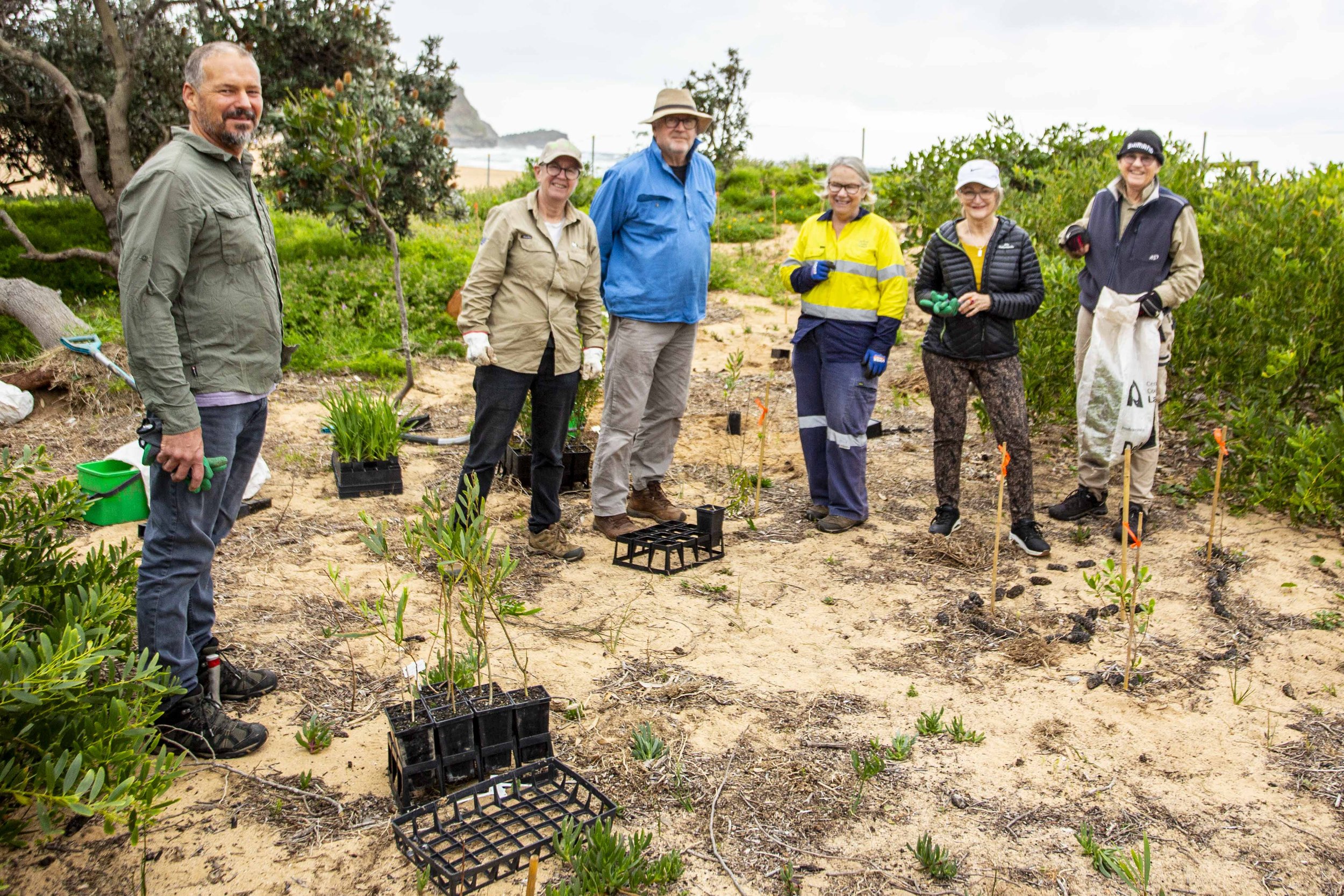Grassroots Regeneration: How Locals are Transforming Avoca's Dunes
The dunecare site between the Shark Tower and the car park
In early 2023, a group of locals got together to start regenerating the Avoca dunes, under the auspices of the Council’s Landcare program. We focused on a small section initially, close to the Shark Tower. Our first forays into the undergrowth unearthed a ton of rubbish - old bottles, cigarette lighters, dog balls and discarded clothing. We also identified a number of invasive plant species, including Asparagus fern, Lantana, Gazania and Fishbone fern. These plants did not evolve in this region and are able to out-compete native species because there are no natural checks on their spread, such as diseases or parasites. Asparagus fern, in particular, had run riot on the Avoca dunes, choking out many other plant species.
A carpet of Asparagus fern
We set to work clearing the invasive plants in order to create space for native species to re-establish themselves. It’s a slow job. While it might seem efficient to take a tractor to the dunes, rip out all the invasive plants and replant from scratch, doing so could be disastrous. The plants’ roots hold the sand dunes in place and the whole area could become unstable should the plants be removed. Futhermore, the birds and animals living there would lose their habitat overnight.
Instead, we are taking a ‘sustainable land management’ approach which entails gradually removing the weeds by hand, opening up the soil to the elements to allow native plants to reestablish themselves. In addition, we are planting native seedlings specially propagated in the Council’s nursery, including Carpobrotus (pig face), Spinifex and Acacia longifolia (coastal wattle).
In early 2024 the Council installed a temporary rabbit-proof fence around part of the site, to allow the newly-planted seedlings to grow large enough not to be eaten by rabbits. At this point, the fence will be moved elsewhere on the site and the whole process will start again.
Volunteers at the dunecare site
The Importance of Native Plants
Banksia flower at the dunecare site
Native plants have evolved over millions of years, forming intricate relationships with local insects, birds, and wildlife. Nearly every animal depends on plants for food or habitat. In return, plants rely on animals for pollination, seed dispersal, and pest control. These co-dependencies are crucial for ecosystem stability and are disrupted by non-native plants.
A Little Corella eating the seeds of a Coastal Wattle bush on the Avoca dunes
Additionally, native plants are well adapted to local soil, climate, and conditions, making them more resilient to droughts, floods, and diseases. Dune plants, in particular, are suited to thrive in unstable, sandy soils, withstanding storms, dry periods, and saltwater incursions.
By nurturing native species and removing invasive ones, we’re helping to restore the natural balance of Avoca’s dunes, ensuring a vibrant and resilient ecosystem for the future.
Get Involved: Join Us!
Are you interested in learning about native plants and dune regeneration? We’re always looking for more volunteers. No long term commitment is required nor is prior experience necessary, and we provide all the tools and gloves. Each session ends with a rewarding coffee break at the nearby Social Junction café.
When: Third Friday of each month (except January)
Time: Meet at 8:00 am, end around 10:30 am
Where: Shark Tower Car Park
Questions? Email Janet at ja43024@gmail.com





